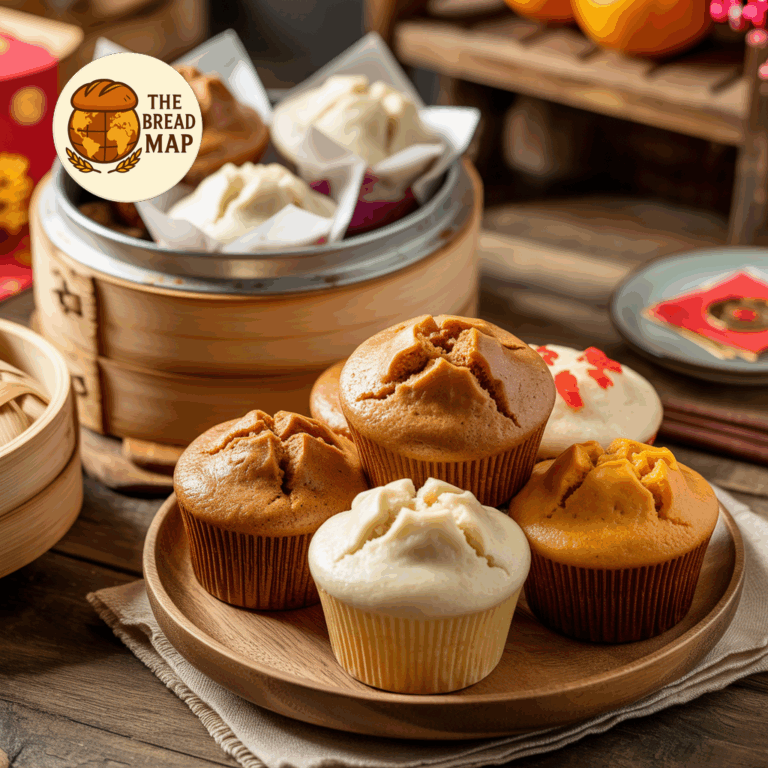
Soft, lightly sweet, and crowned with a joyful bloom — Fa Gao is far more than your average steamed cake. Often appearing during festive tables across Southern China, this charming bread is seen as a harbinger of luck and growth. It’s no wonder the name literally translates to “prosperity cake” — a delicious show of good fortune with every bite.
Historical Background
Fa Gao’s history stretches back centuries and is deeply rooted in China’s agrarian and spiritual traditions. Steamed cakes made from rice flour were staples in ancient times, offering a simple, accessible way to prepare sweets without ovens. Over time, Fa Gao evolved from a regional delicacy into a cultural symbol — a celebratory bread given as prayers to deities or ancestors, often presented during major festivals such as the Lunar New Year and Tian Hou Festival.
Region of Origin
This beloved bread has strong ties to Southern China, especially Guangdong and Fujian provinces. It holds equal significance among the Cantonese and Hakka communities, each of whom has adopted their own twists. In Hakka households, Fa Gao is often infused with natural food coloring or palm sugar, while Cantonese styles may lean toward refinement in shape and decoration. Despite regional differences, the split top — a design resembling a blooming flower — remains a must, as it represents good fortune and rising prosperity.
Ingredients and Preparation
The beauty of Fa Gao lies in its simplicity and symbolism. Its fluffy texture and soft sweetness come from just a few humble ingredients:
- Rice flour
- Brown or white sugar
- Water
- Leavening agents (such as baking powder or fermented rice starter)
The flour and sugar are mixed with water into a smooth batter, then left to rest and ferment slightly, depending on the recipe. After pouring into small cups or molds, the cakes are steamed over high heat to encourage their iconic burst — the top cracks open dramatically during steaming. This ‘bloom’ is considered essential; a well-risen, split-top Fa Gao is a sign of an auspicious year ahead.
Cultural Importance
Often served during Lunar New Year and other milestone celebrations, Fa Gao isn’t just about taste — it’s about intention. The name itself is a play on words in Chinese: “fa” (發) means both to rise and to prosper, while “gao” (糕) means cake. Combined, they make a powerful symbol of upward movement in life, finances, and happiness.
- Offered at altars for ancestors and deities during major festivals
- Given as gifts for housewarmings and weddings to wish the recipient good fortune
- Used in traditional rituals to invite financial abundance
Despite being simple in ingredients, Fa Gao holds layered cultural resonance. Whether served in a bustling city market in Guangzhou or at a quiet Hakka family reunion, this airy, fragrant bread persists as a timeless expression of joy, hope, and togetherness.
Leave a Reply